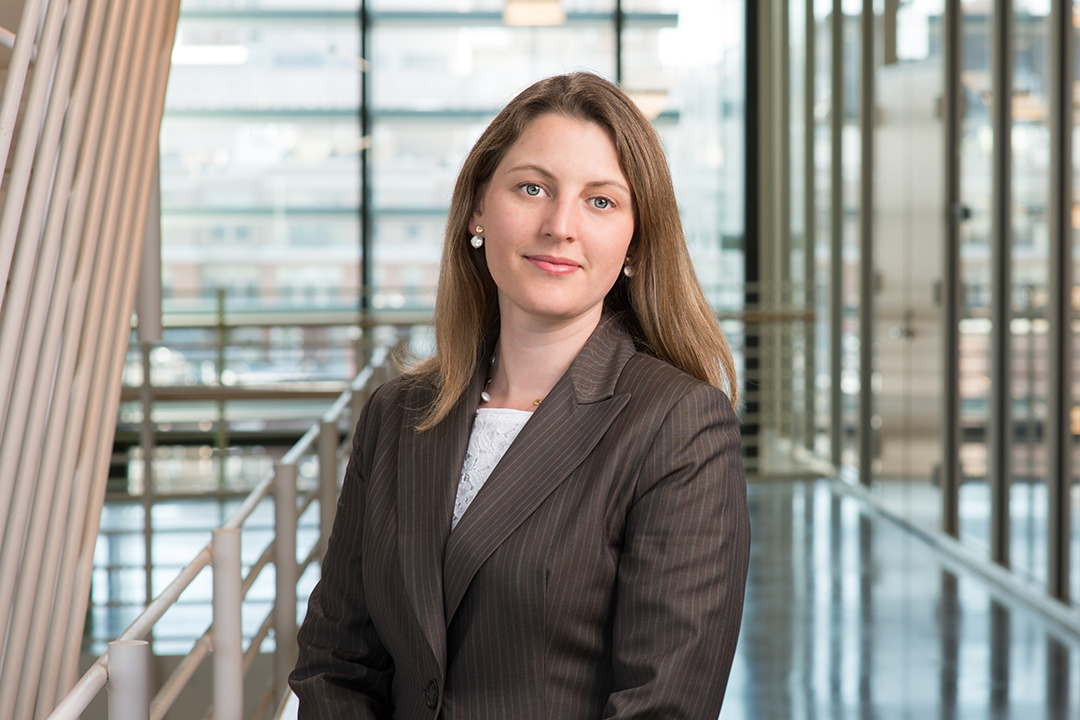Nienke Grossman is a Visiting Associate Professor and Deputy Director of the Center for International and Comparative Law at the University of Baltimore School of Law, where she teaches public international law topics and conflict of laws. Her most recent scholarship, published in the American Journal of International Law and forthcoming in the Virginia Journal of International Law, examines the causes of and possible solutions for the paucity of women judges on international courts and tribunals. She has presented her work to various law faculties in the United States and abroad, as well as at the American Society of International Law’s Annual Meeting and Research Forum, the European Society of International Law’s Annual Meeting, the Harvard-Stanford-Yale Junior Faculty Forum, the University of Cambridge’s Lauterpacht Centre, and before the UN Committee on the Elimination of Discrimination Against Women.
How did you get interested in the issue of the role of women on international courts and tribunals?
I first became interested in the role of women on international courts and tribunals as a practicing lawyer representing states before international courts, including the International Court of Justice, the International Centre for Settlement of Investment Disputes, and an Annex VII Tribunal convened pursuant to the Law of the Sea Convention. I remember walking into my first hearing at the International Court of Justice and seeing 16 men and one woman take a seat behind the bench. There were no women at all adjudicating the cases before the arbitral tribunals in the cases I worked on. I began to wonder whether the paucity of women adjudicators was common across all international courts and tribunals, and if so, what impact it might have on these institutions’ legitimacy.
Describe your research methods.
I have examined the paucity of women judges on international courts from a number of perspectives. For example, my first article looked at whether the paucity of women on most international court benches affects their legitimacy, or justified authority, and whether it affects perceptions of their legitimacy. In my most recent work, I looked at the percentage of women judges on 12 different international courts in mid-2015 and since establishment, explored the causes for the paucity of women judges on the bench, and proposed institutional reforms to achieve more balanced benches.
Describe your key results. Did anything surprise you?
My most recent work shows that women are found on international court benches in quite low numbers, in comparison to their percentage of the population as a whole. For example, on nine of the 12 courts I surveyed in mid-2015, of regional and global membership and varied subject matter jurisdiction, women made up 20 percent or less of the bench. On eight of the twelve courts, there were fewer women judges than in previous years. I also found that courts with aspirational language for a fair representation of the sexes or quota requirements built into their selection procedures had 32 percent women judges while those without such aspirations or requirements had only 15 percent women judges.
One surprising result was that several states with high percentages of female lawyers had very few or even no women serving on international court benches. For example, although France has about 50 percent women lawyers, no French woman served as a permanent female judge on any of the courts on which French men served. The same is true for Russia. Only one British woman and 24 British men served on the international courts surveyed, although about 50 percent of British lawyers are women. On the other hand, China, which has only about 20 percent women lawyers, has successfully nominated women to the International Court of Justice and the World Trade Organization’s Appellate Body. These findings suggest that a limited pool of qualified female candidates does not explain the paucity of women on the bench.
The article proposes that instead of the pool being at fault, opaque and closed national nominations procedures and non-merit based elections at the international level may be affecting sex representativeness on the bench. Also, women appear to have a harder time making it onto courts without sex representativeness aspirations or requirements than those with them.
You have taken your research and are putting it to use. Can you describe your engagement with international institutions?
I have been fortunate to present my work to law faculties and at conferences around the country and the world, raising awareness of these issues. I also presented at the United Nations Committee on the Elimination of Discrimination against Women, and more recently, at an event convened by the Legal Advisor to the Netherlands during International Law Week at the United Nations, a gathering of Legal Advisors to member states of the United Nations. I have also become a Strategic Advisor to Gqual, an initiative to increase the percentage of women serving in international law-making positions, including international courts and tribunals and the human rights machinery of the United Nations and regional organizations.
How does your research impact your teaching?
The experience of researching, writing, and speaking about this issue has given me a deeper understanding of the functioning of international courts and judicial selection procedures, as well as the role of women in international law decision-making. As a result, in my teaching I am able to draw on a broader set of contacts, questions, and knowledge in teaching students about international institutions and issues of diversity and legitimacy.


